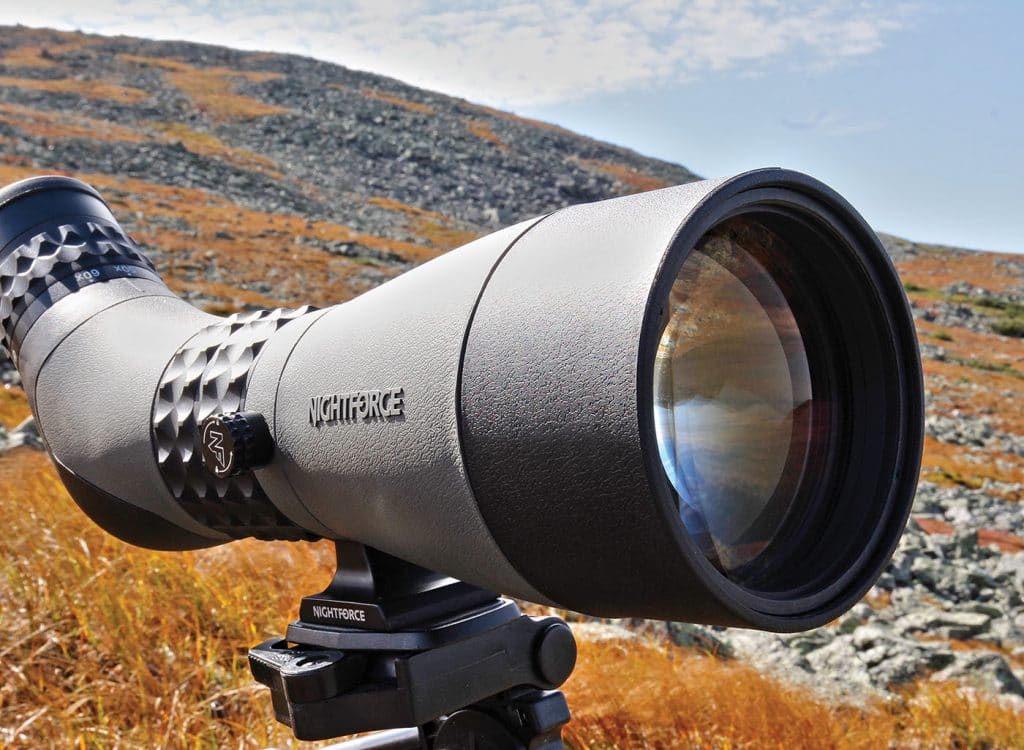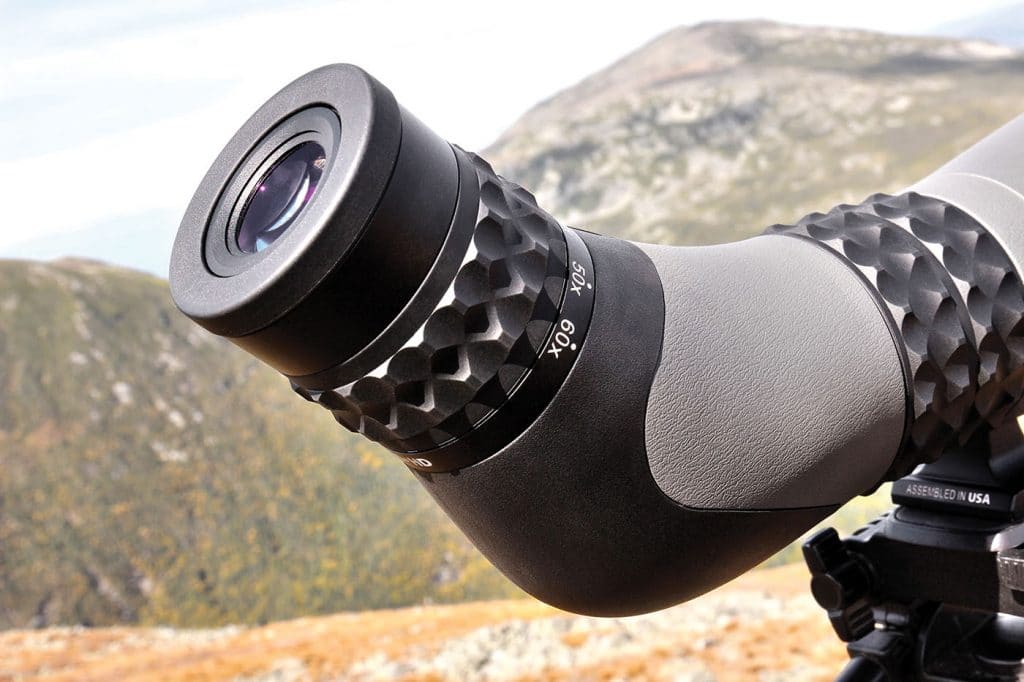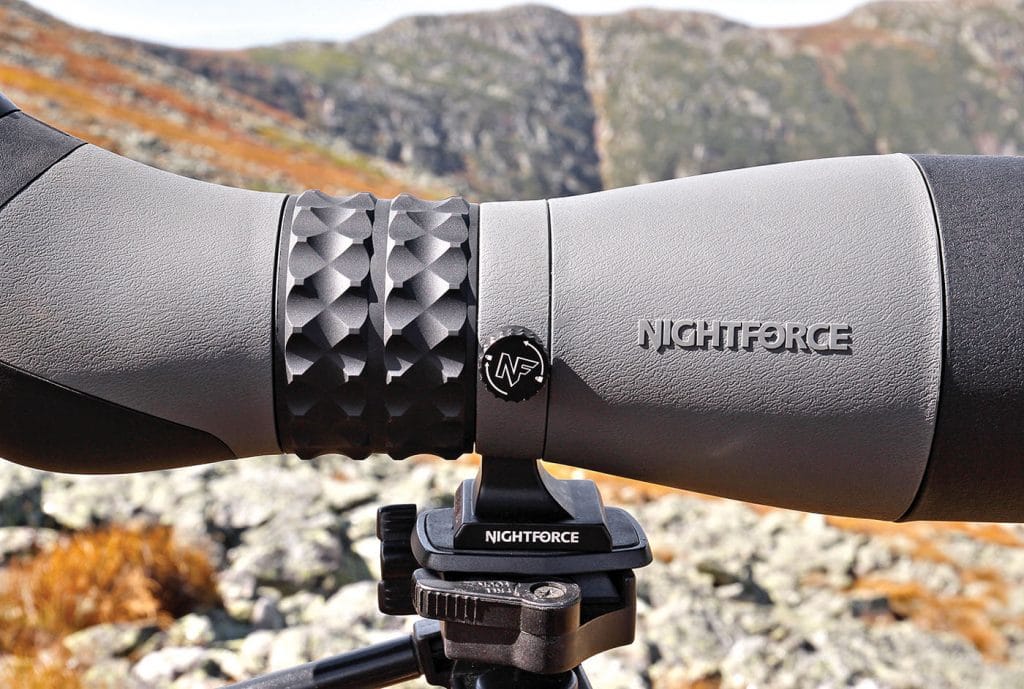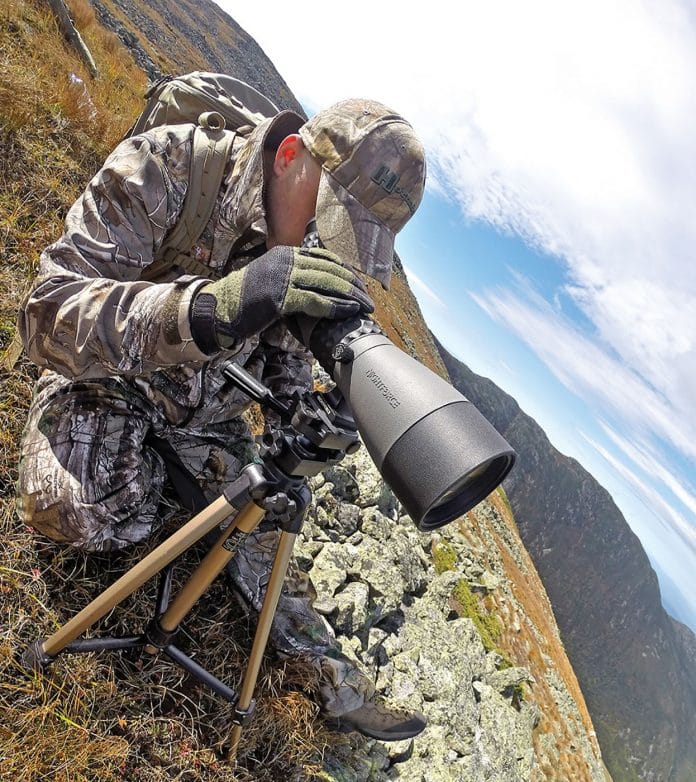In spotting scopes, resolution defines quality. This new optic delivers sharp images affordably!
A couple of years ago, Nightforce fielded the TS-82 Xtreme Hi-Def. The firm was hardly new to hunting optics, but its focus had been rifle scopes. I had reviewed some of the first. High magnification in big tubes came with illuminated, cleverly designed reticles that, refreshingly, floated in the field’s center.
These imported, high-quality scopes evolved into a series that has proven itself to the most discriminating riflemen—benchrest shooters as well as hunters.

The TS-82 is a spotting scope. It earned plaudits from respected sources, including a “best” label in trials against its competition. But like Nightforce rifle-scopes, the TS-82 is costly. Figure a street price of about $2,650. Now there’s the TS-80, named, as was its predecessor, for the diameter of its objective lens. Both these spotting scopes have HD (low-dispersion, or fluorite) glass. Both are thus labeled Hi-Def, but the TS-80 sells for nearly $1,100 less!
When a sample of the new Nightforce arrived on my step, I snatched it out of the box and found to my delight that the supplied foot fit the quick-release pad on my camera tripod. Outside, I gave it some “look time.”
It’s a handsome spotter, a gray rubberized jacket sheathing its magnesium alloy body. Ocular and objective rings are black; ditto the retractable sunshade and power dial, and a wide, deeply textured focus ring mid-tube. Just forward of that, a ring or belt around the scope allows you to rotate it 360 degrees, to put the 45-degree eyepiece in a comfortable position. Detents at 45, 90 and 180 degrees are palpable; but with a small locking knob you can secure the scope instantly in any position.

Like the TS-82, the TS-80 is a 20-60x optic. Variable power is much more useful in spotters than in riflescopes. You find the game with your binocular or naked eye, line up the spotter at low power, then spin up magnification to suit conditions. The power dial on this Nightforce scope rotates smoothly, giving you its full range of magnification in just half a turn. The focus ring is easy to grasp without looking, even with gloves, and buttery in rotation. It delivers razor-edge definition as close as 20 feet. Predictably, eye relief is relatively short: 18mm, or about 3/4 inch. But spotting scopes don’t move in recoil, so snuggling up tight carries no risk.
Do the math, and you’ll see the TS-80 has an exit pupil of 4mm at 20x, 1.3mm at 60x. On a hunt, you’ll likely favor the lower powers—20 to perhaps 35x. At the high end you must endure not only a dim image in poor light, but always a tiny field and significant disturbance from incidental bumps, wind, even your pulse as you steady the tube. Field of view at 1,000 yards for the TS-80 is listed as 105 feet at 20x and 57 feet at 60x.
The view through the Nightforce spotter is remarkably sharp and bright, with slight color fringing at the rim. At all magnifications, the field appears flat, that is, life-like. I used the TS-80 with my reading glasses on, and without them. The eyepiece was forgiving, so spec-wearers won’t have any trouble getting a fast look and a full field.
With this optic, Nightforce has followed the path it has trod with riflescopes. Optical quality and performance count for more than a compact profile or light weight. Powerful optics pull images close and resolve detail. So given a sturdy tripod, adequate light and time to center an object in a small field, the higher the magnification, the better . . . right? Uh, no.

Unaided, the human eye can distinguish roughly one minute of angle. Long ago a fellow named Rayleigh came up with a constant that, divided by a scope’s front lens diameter in millimeters, yields resolution in seconds of angle. The constant is 114.3. For a 65mm spotting scope, divide 114.3 by 65 to get 1.76. Divide 60 seconds of arc by 1.76 to get 34. That’s the most power your eye can use to advantage. Above 34x, objects are bigger but not clearer. Bigger front glass raises the power limit. For a scope with 80mm front glass, figure 42x. Apochromatic (APO), fluorite or ED glass boosts resolution, squeezing for you a little more detail as you dial power higher into the 40s.
At the shooting range, an 80mm spotting scope trumps smaller models. For hunting, it’s tough to beat a 12-40×60 or a 15-45×65, as they’re so much more portable. But when you need the most resolution afield, the 80 is worth every bit of its additional weight and bulk. The TS-80 is about 14.5 inches long and weighs 68 ounces (4.25 pounds). It comes with outside ocular and inside objective lens caps. It carries the company’s limited lifetime warranty. See it at your outdoor retailer, or contact Nightforce Optics, Dept. OT; Tel.: (208) 476-9814: Web: www.nightforceoptics.com





















